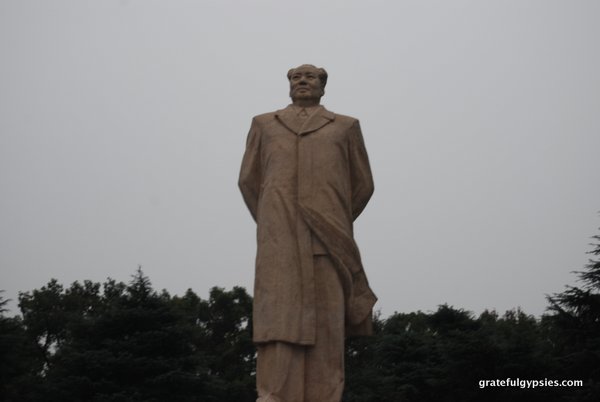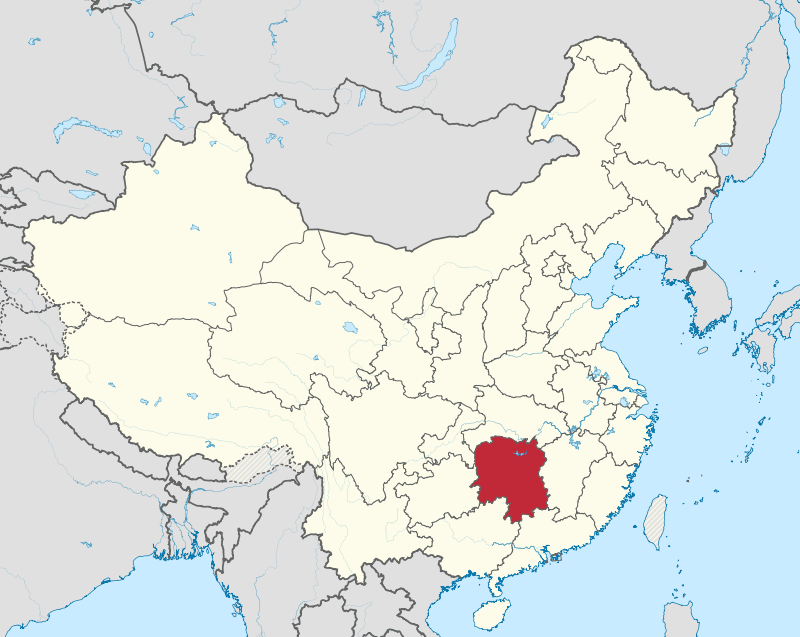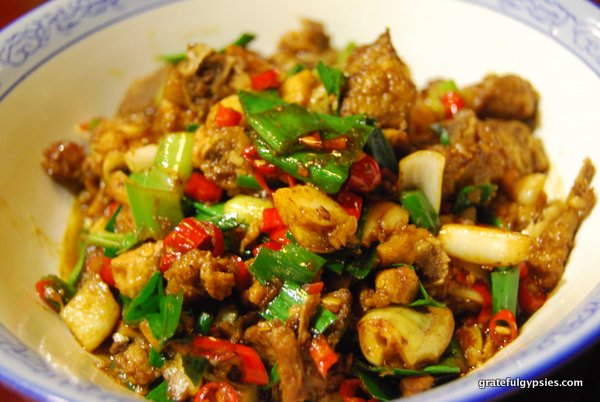Better Know a… Province (Hunan) Posted by sasha on Apr 7, 2016 in Uncategorized
After exploring Guizhou, we move a bit more inland to visit Hunan province (湖南省 – hú nán shěng):
History
The area now known as Hunan was long ago home to the ancestors of many ethnic minority groups such as the Miao, Dong, and Yao. In 350 BC, it was the southernmost part of the State of Chu (楚 – Chǔ), ruled by the Zhou Dynasty (周朝 – Zhōu cháo). When the Qin (秦 – Qín) took over some years later, Hunan formed the central part of the first unified state of China. Covered in forest, the region was still very sparsely populated. This changed during the Han Dynasty (漢朝 – Hàn cháo), when a large influx of Han Chinese migrated there and pushed the indigenous peoples into the hills. During the later Mongol and Manchu invasions, even more Han fled here.
Modern Hunan and Hubei were part of a province called Huguang (湖廣 – Hú guǎng) later on, later splitting in 1664. The current name for the province came in 1723. Hunan became an important scholarly area with the founding of the Yuelu Academy (岳麓书院 – yuè lù shū yuàn). The population continued to grow to the point of overcrowding, which led to quite a few peasant uprisings. When the Taiping Rebellion (太平天国运动 – tài píng tiān guó yùn dòng) broke out, it eventually spread from Guangxi into Hunan. It was actually a Hunanese army that marched into Nanjing and stopped it.
Uprisings and political unrest would continue in Hunan, including the Autumn Harvest Uprising (秋收起义 – qiū shōu qǐ yì) led by Hunan’s own Mao Zedong. Under pressure from the Nationalist KMT forces, Mao and the Communists began the Long March from the Hunan-Jiangxi border. Hunan was later the sight of bitter fighting during the Sino-Japanese War, with the KMT defending Changsha until it finally fell in 1944. Civil war followed, with Mao’s Communists eventually winning and founding the People’s Republic of China. As Mao’s home, Hunan naturally supported his policies during the Cultural Revolution. It was a bit slow to adopt the opening and reform policies of Deng Xiaoping after Mao’s passing.
Geography
The name Hunan literally translates as “south of the lake,” as it is in fact located south of Lake Dongting (洞庭湖 – dòng tíng hú). This is the largest lake in the province and second largest freshwater lake in the country. Hunan is a landlocked province in the South Central part of China, and it shares a border with Hubei, Jiangxi, Guangdong, Guangxi, Guizhou, and Chongqing. It’s also located on the south bank of the Yangtze River. It’s a rather mountainous province, with the Wuling, Xuefeng, Nanling, and Luoxiao mountain ranges. Hunan is divided into fourteen prefecture-level divisions, thirteen prefecture-level cities, and one autonomous prefecture. Its capital city is Changsha (长沙 – cháng shā), located in the northeast on the banks of the Xiang River.
Climate
Hunan has a humid, subtropical climate. In general, the northern part of the province experiences more extreme weather than the south – hotter summers and colder winters. The winter in Hunan is short and cool, while summers are very hot and humid. Most of the monsoon rains fall from April-June, and annual rainfall in the province is around 56 inches (1,420 mm). The best time of the year to visit Hunan is during the fall, when there’s less rain and it’s not quite so hot.
Population
As of the last count (2006), the population of Hunan was around 67 million. As with most of the country, a vast majority of the people are Han (about 90%). The main minority groups that call Hunan home are the Yao, Mao, Tujia, and Dong. There’s also a community of Hunanese Uyghurs here, although they’re quite different from the Uyghurs who live in other areas.
Culture
The type of Chinese spoken across Hunan is called Xiang (湘語 – xiāng yǔ) – also known as Hunanese – is a group of similar dialects. If you’ve ever watched a video of Mao and not exactly understood his Chinese, that’s probably because of his thick Hunanese accent. As far as religion goes, most people follow Chinese folk religions, Chinese Buddhism, or Taoist traditions. When it comes to food, Hunanese cuisine is known to be particularly spicy, thanks to its liberal use of chili peppers.
Famous Places
Hunan is known for its natural beauty, and there’s no place more famous in the province than Zhangjiajie (张家界 – zhāng jiā jiè). This national park, full of amazing quartz-sandstone rock formations, is said to have been the inspiration for James Cameron in creating the landscape for the movie Avatar.
One of the Five Great Mountains of China can also be found in Hunan – Mt. Heng (衡山 – héng shān) – not to be confused with the other Mt. Heng in Shanxi. Of course, Mao Zedong’s hometown of Shaoshan (韶山 – sháo shān) is also a popular tourist destination.
Hunan is an important piece of Chinese history, and it’s also one of the most popular places to visit thanks to its stunning natural landscapes. While it may not be the easiest place to get to, adding this province to your China trip is surely worth it.

Build vocabulary, practice pronunciation, and more with Transparent Language Online. Available anytime, anywhere, on any device.
About the Author: sasha
Sasha is an English teacher, writer, photographer, and videographer from the great state of Michigan. Upon graduating from Michigan State University, he moved to China and spent 5+ years living, working, studying, and traveling there. He also studied Indonesian Language & Culture in Bali for a year. He and his wife run the travel blog Grateful Gypsies, and they're currently trying the digital nomad lifestyle across Latin America.







Leave a comment: